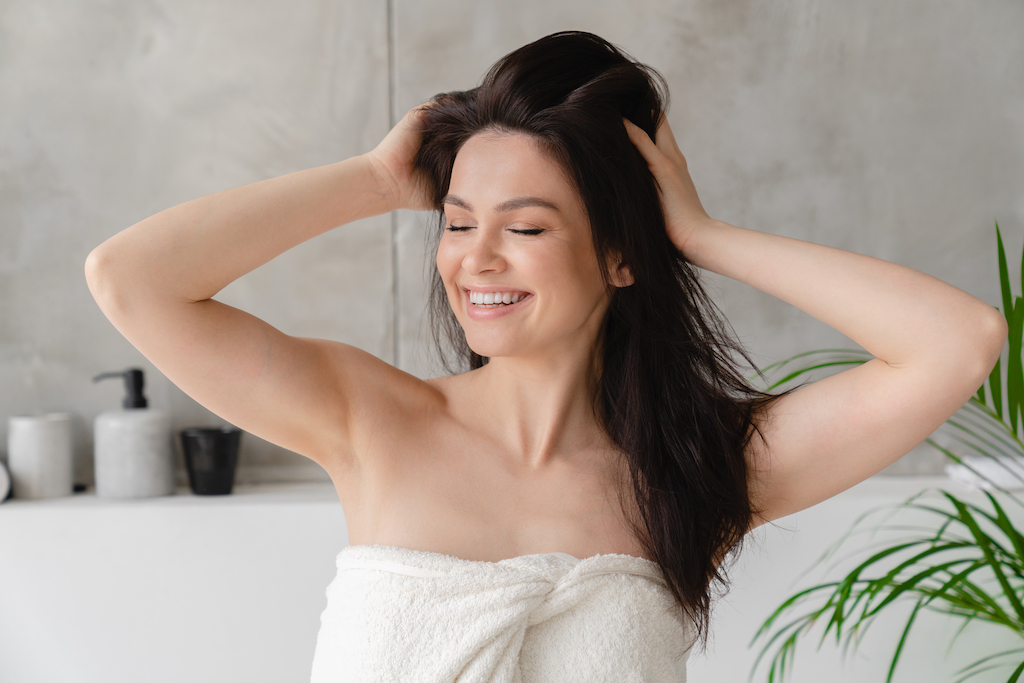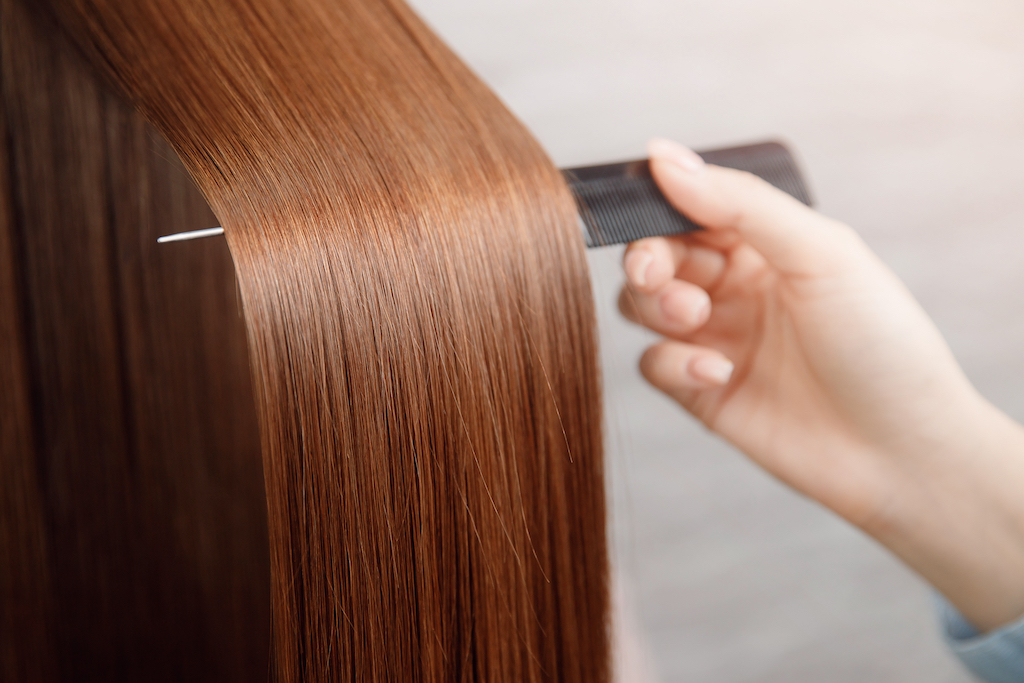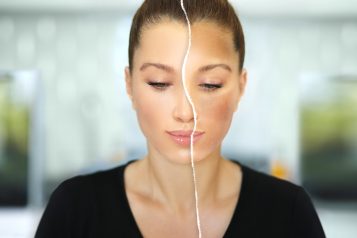Dr. Melissa Toyos is an oculofacial surgeon specializing in FUE (follicular unit extraction) hair and eyebrow transplantation, CO2 facial resurfacing, and sculpting faces with injectables. A summa cum laude graduate and board-certified Ophthalmologist, she is a partner at Toyos Clinic and formerly was a partner at one of the largest eye care practices in the country. Dr. Toyos is a national researcher and lecturer. She trains other doctors on surgical techniques as well as cosmetic procedures. Her clinical research has been instrumental in many FDA approvals. She is the former President of the Missouri Society of Eye Physicians and Surgeons. She has held various leadership positions with the AAO. Dr. Toyos has served as a mentor to young female surgeons, helping them understand how to balance a career and motherhood.
 Photo Credit: Shutterstock
Photo Credit: Shutterstock
Summer is the perfect time to talk about keratin – keratin treatments spike during the summer months because of damage from daily damage sun and chlorine and are seeking relief from the relentlessness of summertime humidity. Keratin is a natural building block of hair and is responsible for the health, elasticity, and strength of hair. Many people know keratin to mean “straight hair,” and it is associated with the straightening treatments or Japanese water treatments that celebrities like Demi Moore get regularly, but keratin truly means healthy, strong, smooth hair of every type.
Our keratin is depleted daily. Environmental factors like pollution, stress, heat styling, chemical services, weather, and aging all affect the level and quality of keratin in our hair. To make your hair softer, smoother, and stronger than ever, Haute Beauty expert Dr. Melissa Toyos talks about the many ways to replenish the keratin in your hair.
How can you get more keratin into your hair?
There are a few ways: first, you can ingest more of the products that help to build keratin naturally: proteins specifically containing cysteine or oral hair supplements with extra cysteine (and methionine).
Second, you could apply it topically (the ingredient may say keratin or hydrolyzed collagen) with products like keratin-infused shampoos, conditioners, and finishing products that bind to damaged areas of hair temporarily make it look shiny, glossy and smooth. (De-frizzing is one of the main reasons people seek keratin treatments.) These at-home products are convenient and cost-effective but need to be applied daily or weekly to maintain benefits.
If you want something more long-lasting, you might consider an in-salon keratin treatment. Keratin treatments, also known as Brazilian blowouts or Japanese water treatments, use liquid keratin, chemicals like formaldehyde, and high levels of heat to bind and seal the keratin to the hair strand, making it immediately smoother, shinier, and stronger. Keratin treatments reduce the look of split ends, reduce frizz and even decrease blow drying time quite a bit by reducing the hair’s porosity. Results can last six months or longer and because of the chemicals, it is not recommended that individuals use these types of treatments more than three times annually.
 Photo Credit: Shutterstock
Photo Credit: Shutterstock
Are in-salon keratin treatments right for everyone?
Definitely not. The salon treatments are pricier, can make fine hair look even thinner and the chemicals can be irritating to skin and eyes and they can even change the results of your expensive color job. Pregnant women should not expose themselves to these irritating chemicals and gentler smoothing treatments may be safer for individuals and hair care professionals who are breathing the fumes (although they aren’t quite as strong in the straightening/de-frizzing categories).
How can you maximize your keratin treatments?
To maximize the results of your keratin treatments, stay away from salt, sun, chlorine, parabens, and sodium lauryl sulfate – a common detergent found in many shampoos. Heirs to wish you good hair even during the hottest, most humid summer days!
For more information, visit Dr. Brian A. Levine's social media:

























